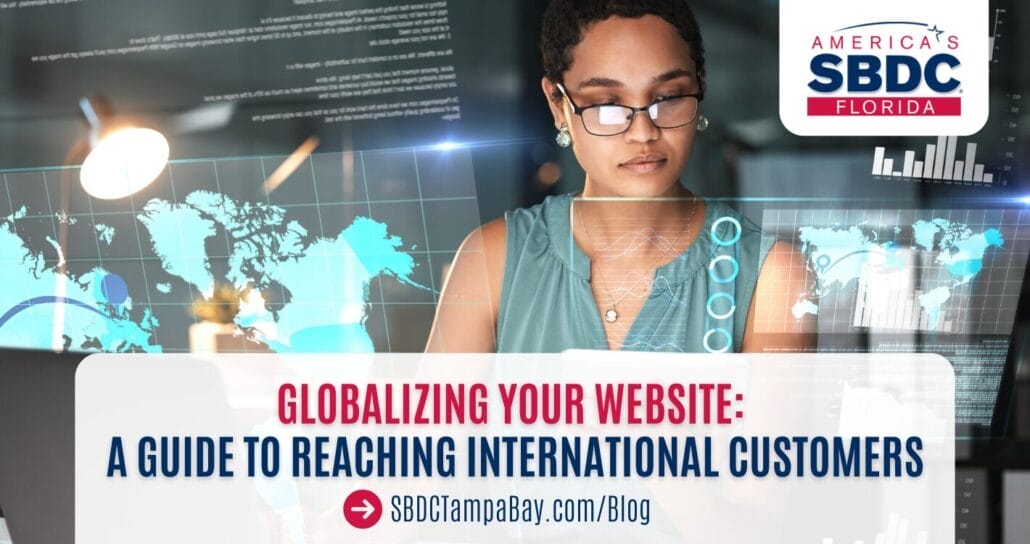Globalizing Your Website: A Guide to Reaching International Customers

By Selma Canas | November 4, 2024
If you’re looking to expand your business beyond domestic borders, globalizing your website is a crucial step. A well-localized website can help you connect with potential customers around the world and boost your sales. Here’s a guide to help you get started:
1. Conduct Thorough Research
- Understand Your Target Market: identify your ideal customers in different regions. Learn about their cultural preferences, language, and buying habits. For example, in Japan, customers may appreciate a more minimalist website design, while in India, bright colors and imagery might be more appealing.
- Research Local Competitors: analyze how your competitors are approaching the global market. Identify their strengths and weaknesses to learn from their strategies. For instance, if a competitor is offering free shipping to specific regions, you might consider implementing a similar promotion.
- Check Local Laws and Regulations: ensure your website complies with local regulations, such as data privacy laws (e.g., GDPR, CCPA). This might involve updating your privacy policy to address specific requirements in different countries.
2. Choose the Right Domain Name
- Opt for a Global Domain: consider using a .com or .net domain for maximum reach.
- Localize Domain Names: if you’re targeting specific regions, consider using country-specific top-level domains. If you’re targeting the UK market, use .co.uk, for Brazil, use .br, and for Germany, use .dr, for example. Using country-specific domains can help you appear more locally relevant.
3. Translate Your Content
- Professional Translation: hire professional translators who are native speakers to ensure accurate and culturally appropriate translations. A literal translation of a phrase might not convey the intended meaning in another language, so it’s important to consider cultural nuances.
- Consider Language Variants: if you’re targeting countries where the same language is spoken with different dialects (e.g., Spanish in Spain and Latin America), ensure your content is tailored to each variant. For example, “tú” might be used in Spain, while “vos” might be more common in Latin America.
4. Adapt Your Website Design
- Cultural Sensitivity: ensure your website design is culturally sensitive and avoids any offensive imagery or symbols. Certain colors or symbols might have negative connotations in some cultures. In Italy, purple represents bad luck but in Japan, it is worn by royalty.
- Currency and Measurement Systems: use the appropriate currency and measurement systems for each target region. For example, in the United States, measurements are typically in inches and pounds, while most countries use the metric system.
- Mobile Optimization: ensure your website is fully optimized for mobile devices, as mobile usage is widespread globally.
5. Localize SEO
- Keyword Research: identify relevant keywords in each target language and optimize your content accordingly. Use tools like Google Keyword Planner to find popular search terms in different regions.
- Local Citations: create local business listings in directories and online maps for each target region. This can help your website appear in local search results.
- Country-Specific Backlinks: build backlinks from websites relevant to your target market. This can help improve your website’s ranking in local search results.
6. Consider Local Payment Methods
- Offer Popular Options: provide popular payment methods in each region, such as PayPal, credit cards, and local e-wallets. For example, Alipay and WeChat Pay are popular in China.
- Localize Checkout Process: make the checkout process as seamless as possible by using the local language and currency.
8. Test and Iterate
- Regular Testing: continuously test your website’s performance and user experience in different regions. Use tools like Google Analytics to track website traffic and user behavior.
- Gather Feedback: collect feedback from customers and make necessary adjustments based on their insights.
By following these guidelines, you can effectively globalize your website and reach a wider audience of potential customers. Remember, success in the global market requires ongoing effort and adaptation to local preferences and trends.





Selma Canas, CGBP
Canas, Consultants, International Consultants 2, TampaNASBITE Certified Global Business Professional (CGBP), Florida SBDC at USF, Tampa
Specialties: International Trade, Export Marketing Plans, Market Research, Digital Marketing
As an international trade specialist at the Florida SBDC at University of South Florida, Selma Canas is responsible for guiding small businesses through the complexities of the international trade process through one-on-one consulting, training and resources. Canas is a NASBITE International Certified Global Business Professional (CGBP) and teaches courses on international trade basics and market research at the Florida SBDC at USF. For export-ready companies, she develops Export Marketing Plans in partnership with SelectFlorida. She has developed more than 40 plans during the past eight years and participated in trade missions to Brazil, Chile, Canada, the Dominican Republic, and Panama.